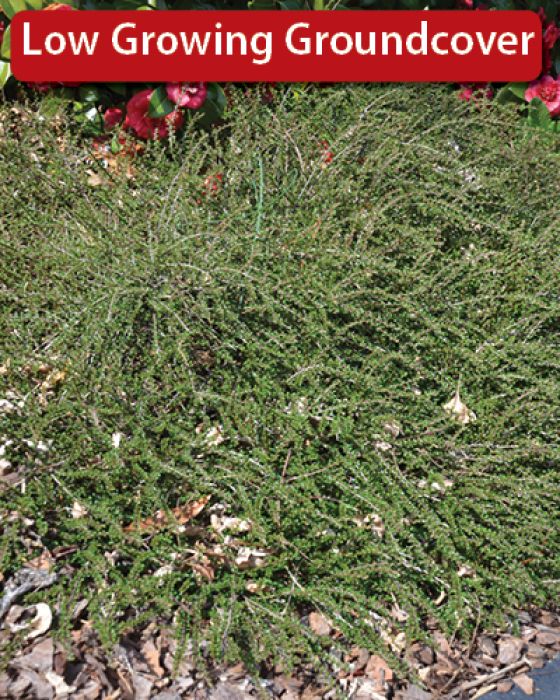THE GARDEN SCOOP: Ground Cover Offers Plenty of Benefits
The real perennial problem facing gardeners is the weeds! Hear about the different types of ground covers we offer to help control and enhance your lawn.



Out of stock
A very popular low growing groundcover, with a mounded spreading habit of growth; dense, tightly held branches; light pink flowers in spring along the branches, followed by striking red fruit in fall, one of the overall best groundcovers
Elevate your landscaping with Gertens' unmatched variety of shrubs! Selecting the right shrubs for your backyard can enhance its beauty and functionality. Consider factors like sunlight, soil type, and mature size when choosing shrubs. For sunny areas, flowering shrubs like roses or hydrangeas can add color and charm. In shady spots, opt for shrubs like azaleas or hostas. Evergreen shrubs provide year-round interest and privacy, while deciduous shrubs offer seasonal color changes. At Gertens, we offer a wide selection of shrubs to suit every backyard need.
Height: 12 inches
Spread: 3 feet
Sunlight:![]()
![]()
Hardiness Zone: 4a
Description:
A very popular low growing groundcover, with a mounded spreading habit of growth; dense, tightly held branches; light pink flowers in spring along the branches, followed by striking red fruit in fall, one of the overall best groundcovers
Ornamental Features
Tom Thumb Cotoneaster is primarily grown for its highly ornamental fruit. It features an abundance of magnificent red berries from late summer to late fall. It features tiny clusters of pink flowers along the branches in late spring. It has dark green foliage throughout the season. The tiny glossy round leaves turn an outstanding brick red in the fall.
Landscape Attributes
Tom Thumb Cotoneaster is a multi-stemmed deciduous shrub with a ground-hugging habit of growth. It lends an extremely fine and delicate texture to the landscape composition which should be used to full effect.
This shrub will require occasional maintenance and upkeep, and should not require much pruning, except when necessary, such as to remove dieback. It has no significant negative characteristics.
Tom Thumb Cotoneaster is recommended for the following landscape applications;
Planting & Growing
Tom Thumb Cotoneaster will grow to be about 12 inches tall at maturity, with a spread of 3 feet. It tends to fill out right to the ground and therefore doesn't necessarily require facer plants in front. It grows at a slow rate, and under ideal conditions can be expected to live for approximately 30 years.
This shrub does best in full sun to partial shade. It is very adaptable to both dry and moist growing conditions, but will not tolerate any standing water. It is not particular as to soil type or pH, and is able to handle environmental salt. It is highly tolerant of urban pollution and will even thrive in inner city environments. This is a selected variety of a species not originally from North America.
| SKU | Container Size |
| S1144 | #1 Container (1 Gallon) |
| S1145 | #2 Container (2 Gallon) |
* Not all container sizes may be available at this time. See store for details on specific container size availability.
| Gerten Grown Plants | Gerten Grown Plants |
|---|---|
| Sun Preference | Full-Sun |
| Mature Height (Range) | under 2 feet |
| USDA Hardiness Zone | 4, 5, 6, 7, 8, 9 |
| Common Family Name | Cotoneaster |